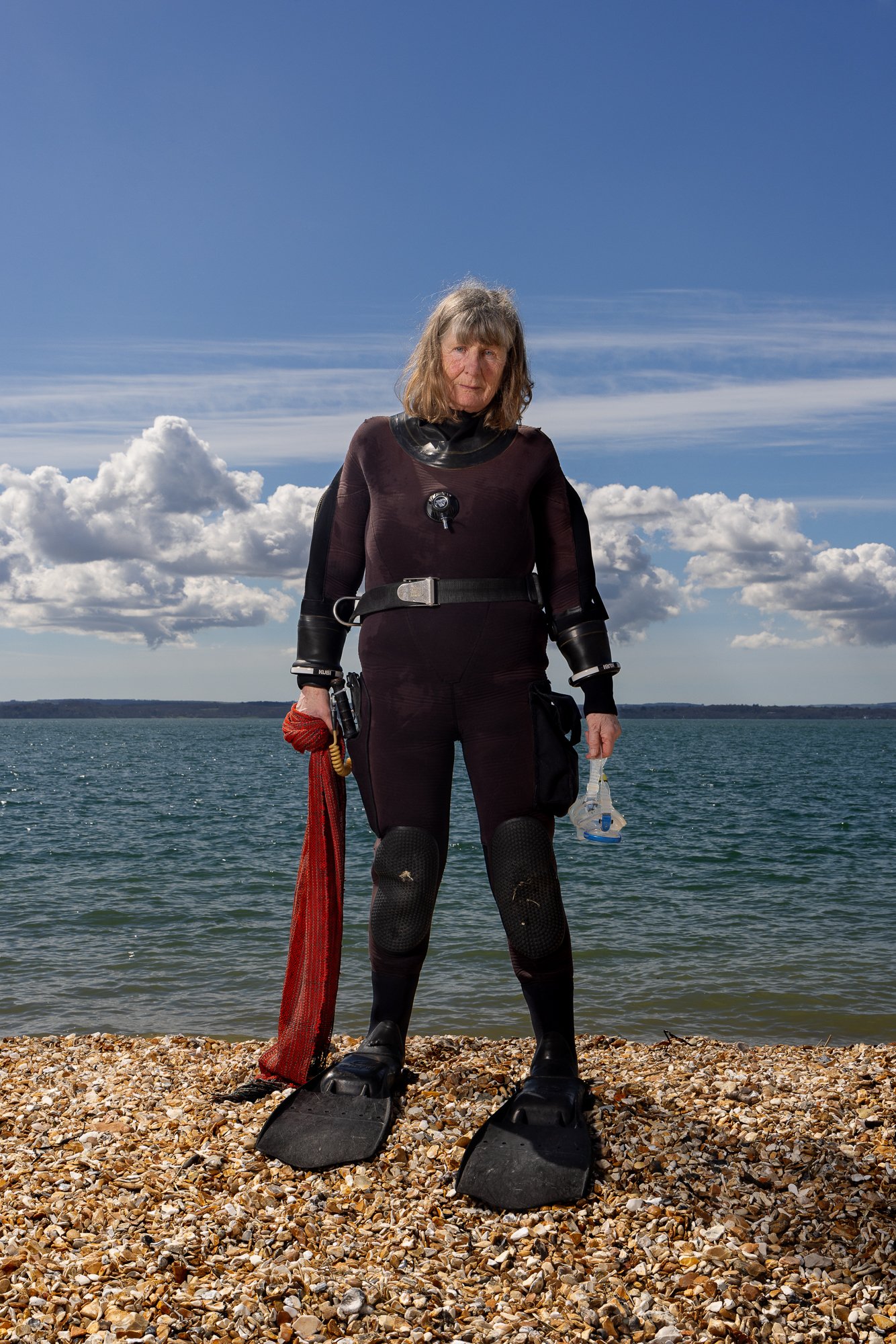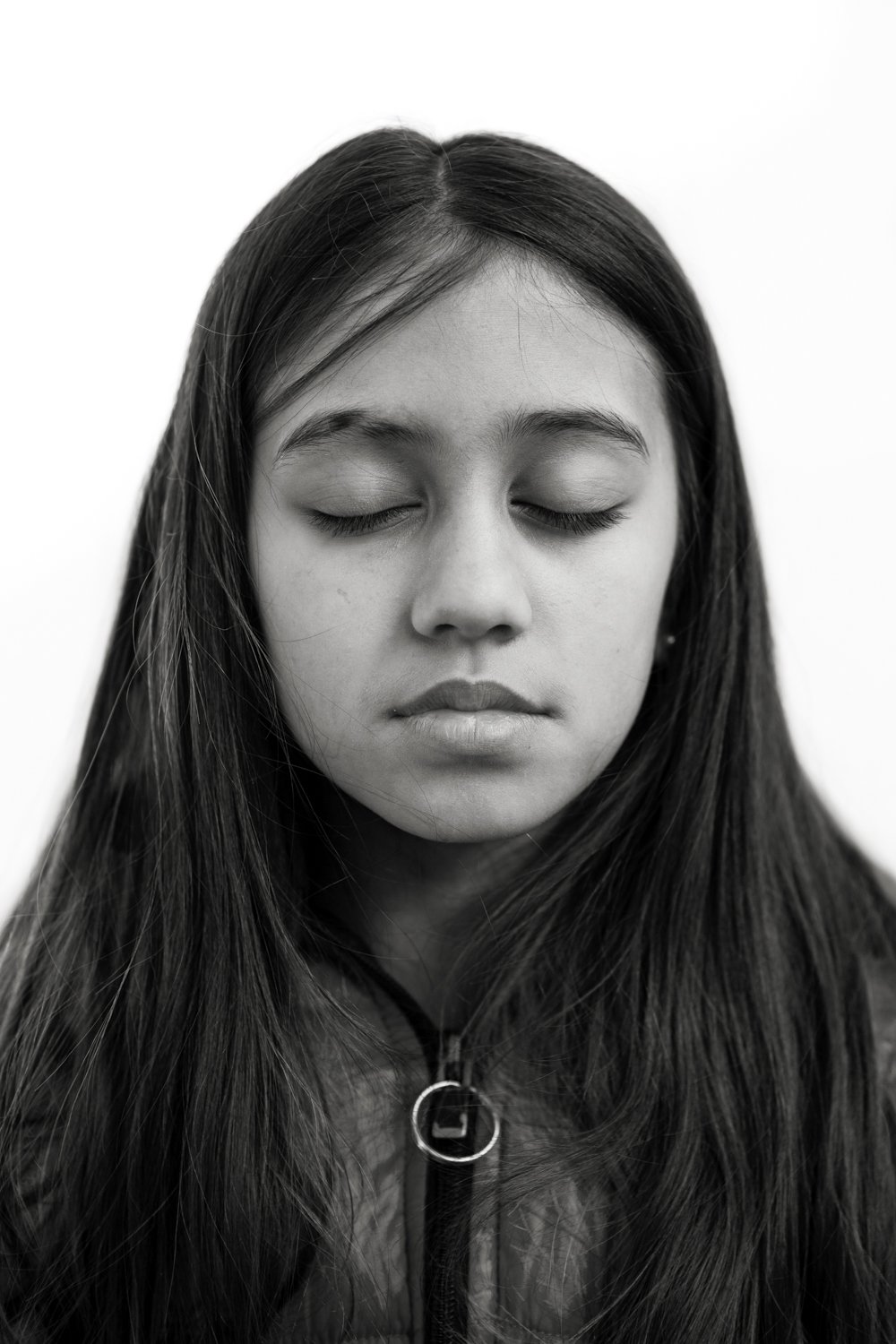SHE_SEES
MARITIME WOMEN_THEN_NOW_ONWARD
READ THEIR STORIES.
SHE_SEES: MARITIME WOMEN
SHE_SEES is a contemporary project celebrating the diverse roles of women in the UK’s maritime industry. This collaborative endeavor features twenty-three professional women, whose stories, visions, and experiences are brought to life through photography, textiles, and moving image.
Each portrait is thoughtfully composed and captured in a location chosen by the woman herself, emphasizing her connection to the maritime world. The distinctive “hyper-real” lighting style highlights the women’s individuality and empowers them within their natural environments.
The textile component of SHE_SEES complements the photography, with each piece handwoven using natural fibers such as flax, hemp, and jute. Inspired by historical maritime references, these textiles add depth and texture to the project.
By combining photography and textile art, SHE_SEES challenges traditional gender roles and celebrates the contributions of women in the maritime industry. This collaborative project aims to raise awareness, spark conversation, and inspire future generations of women to pursue careers in maritime fields.
Access stories here
Branding, design, and exhibition design by SAMA CREATIVES
In the Pink Room
A Journey of Self-Discovery
In the Pink Room: A Journey of Self-Discovery
"In the Pink Room" is a captivating exploration of the inner child, blending storytelling, textiles, and photography. Inspired by her personal therapy journey, Emilie Sandy sought to give voice to her inner child and encourage others to do the same.
This collaborative project with Erna Janine invites viewers to enter a metaphorical "pink room," a space of imagination and introspection. Portraits of participants with closed eyes symbolize the act of turning inward, connecting with their inner child. A moving image piece, accompanied by a soothing soundtrack, depicts mothers and children playfully interacting with a pink cloth, further emphasizing the theme of childhood innocence and creativity.
The installation's visual language, combining photography, textiles, and collage, evokes a sense of wonder and nostalgia. By inviting viewers to engage with the artwork on a personal level, "In the Pink Room" encourages self-reflection and a reconnection with one's inner child.
Red Thread
[Rauður Þráður]
A Tapestry of Motherhood
Red Thread: A Tapestry of Motherhood
Red Thread is a collaborative photography and textile project by Icelandic photographer Emilie Sandy and Dutch weaver Erna Janine. This intimate exploration delves into the diverse experiences of motherhood through portraits of eleven women.
The project is inspired by the Icelandic proverb "Rauður Þráður," which signifies the red thread connecting all things. This metaphor is embodied in the handwoven textiles, created using traditional techniques and natural fibers, that intertwine with the photographic portraits.
Each photograph, a collaborative effort between Emilie and the participants, captures a unique and personal moment. By excluding their faces, the women are encouraged to express their experiences openly and honestly. The textiles, often imbued with symbolic meaning, further enhance the narrative and emotional depth of the images.
Red Thread celebrates the multifaceted nature of motherhood, exploring themes of identity, body image, and the passage of time. It offers a poignant reflection on the universal bond between mothers and children, and the enduring power of creativity and connection.
Branding, design, and exhibition design by SAMA CREATIVES
Sen’i [Transition]
A Celebration of Motherhood
Seni: A Celebration of Motherhood
Seni is a captivating visual exploration of the bond between mothers and children. Three mothers of Japanese heritage—Cassie, Diana, and Emily—are photographed and filmed interacting with their children amidst large, handwoven cloths.
Inspired by the Saori philosophy, these lightweight, silk cloths are created using a freestyle weaving technique that embraces individuality and natural imperfections. The resulting images and videos evoke a sense of tenderness, playfulness, and the enduring nature of the mother-child bond.
The installation invites viewers to immerse themselves in the experience, with the video projection and Diana's evocative music creating a multisensory experience. The playful interactions between mothers and children highlight the importance of fostering creativity and allowing children to explore their imaginations freely.
By celebrating the beauty of the mother-child bond, Seni encourages us to embrace our inner child and cherish the simple joys of life.
M is for Mothers
A Visual Exploration of Parenthood
M is for Mothers: A Visual Exploration of Parenthood
As a parentless parent, I've often navigated the complexities of motherhood without the guidance of my own parents. Seeking connection and understanding, I embarked on a project to explore the diverse experiences of other mothers.
Through a combination of intimate photography and personal journaling, "M is for Mothers" offers a candid look into the lives of eleven women. By capturing both the mundane and the extraordinary moments of motherhood, the project aims to challenge societal expectations and normalize the often-hidden realities of parenting.
Each photograph is a collaborative effort, born from a trusting relationship between the photographer and the subject. By sharing their stories and allowing their homes to be documented, the mothers have created a space for vulnerability and honest self-reflection.
The project highlights the emotional and physical challenges of motherhood, while also celebrating its joys and triumphs. By sharing these intimate moments, "M is for Mothers" offers a sense of solidarity and understanding to parents everywhere.
A Mothers Gaze
A Journey Through Time
A Mother's Gaze: A Journey Through Time
"A Mother's Gaze" is a poignant photographic series that follows eleven mothers through their journey from pregnancy to toddlerhood. Captured by Emilie Sandy, the project documents the transformative power of motherhood through a series of triptych portraits.
Each triptych showcases a mother in a specific yoga pose: pregnant, with a newborn, and with a two-year-old. The images offer a glimpse into the physical and emotional changes that accompany motherhood, from the anticipation of pregnancy to the challenges and joys of raising young children.
The project also highlights the importance of community and support for new mothers. By participating in yoga classes, the women were able to connect with one another, share experiences, and find solace in their shared journey.
Through these intimate portraits, "A Mother's Gaze" celebrates the strength, resilience, and love of mothers, while also acknowledging the challenges and complexities of parenthood.
I Found A Small Lemon Tree
A Journey Through Grief
Emilie Sandy's "I Found a Small Lemon Tree" is a poignant exploration of grief and the enduring power of memory. Through a series of photographs and written reflections, Sandy shares her personal journey of loss and healing.
The Power of Memory: The project highlights the importance of preserving memories, both through physical objects and emotional recollection.
The Passage of Time: The photographs often juxtapose past and present, underscoring the cyclical nature of life and loss.
The Symbolism of the Lemon Tree: The lemon tree, a symbol of life, growth, and resilience, represents the enduring nature of love and memory, even in the face of loss.
The Role of Photography as a Therapeutic Tool: Sandy uses photography as a means of processing her grief and finding solace.
The project's emotional impact stems from its raw honesty and vulnerability. By sharing her personal experiences, Sandy creates a space for empathy and understanding. The photographs, often intimate and introspective, invite viewers to connect with their own emotions and memories.
For more information on projects relating to Grief, visit Picture My Grief







